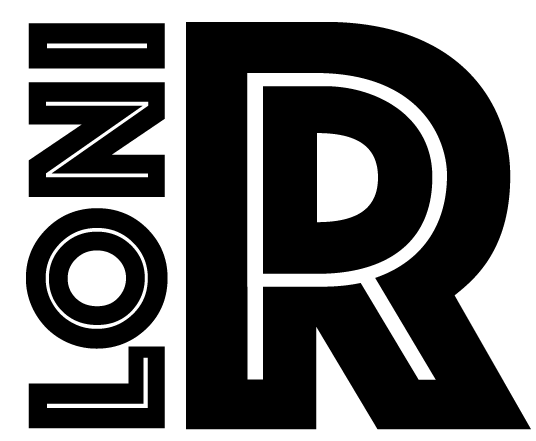Research
LONIR furthers this mission by developing resources to aid investigators and by facilitating collaboration between researchers around the world. By creating and sharing a diverse array of tools to analyze and visualize imaging data, LONIR fosters the interdisciplinary partnerships that are vital to the advancement of brain research.
Now in its nineteenth year, LONIR aims to continue providing innovative solutions for the investigation of imaging, genetics, behavioral and clinical data. Projects have been designed within the fields of Technology, Research, and Development (TR&D).
Data Science
Historically, the research community has struggled to maximize the potential of existing neuroscientific data due to its complexity. Without tools to understand the availability, characteristics, and contents of these data, our capacity to map and comprehend the brain is greatly diminished.
The goal of TR&D1 is to remove these barriers to interpreting data by providing researchers with intuitive and interactive tools. Not only will LONIR resources assist with managing the underlying data, but they will provide powerful interfaces delivered via state-of-the-art web-based software.
The wide availability of novel analytical tools will expand the scope of the community that can easily access and utilize LONIR data. Whereas the reuse of data has traditionally been rare due to the challenge of locating necessary elements, LONIR’s new technology will rapidly locate and extract relevant datasets on command.
Ultimately, the increased ease of accessing, identifying, and managing complex neuroscientific data will render the reuse of data feasible for the broader research community. The resulting large-scale collaboration has the potential to accelerate the pace of discovery in the areas of brain structure, function, and disease.
Diffusion MRI and Connectomics
During the most recent P41 grant period, LONIR investigated automated tract extraction, methods of diffusion modeling that are more sensitive to disease, and adaptive techniques to detect changes in neural networks. The current project focuses on increasing power when analyzing brain connectivity and handling unprecedentedly large datasets.
Intrinsic Surface Mapping
These tools will ultimately enable the robust and accurate comparison of structural variations in development and pathology across populations.
Current Research
The Data Science core, or TR&D1, is working to quantify, control, and monitor image quality as an essential prerequisite for ensuring the validity and reproducibility of many types of neuroimaging data analyses. However, when performing large cohort neuroimaging studies, manual work for these tasks becomes nearly impossible.
Machine Learning and Deep Learning
The Diffusion MRI and Connectomics core, or TR&D2, has focused on improving models of tissue microstructure using tensor distribution function (TDF) and multi-shell methods, automated extraction and statistical analysis of white matter tracts and fiber bundles, and new brain connectivity analysis methods. Here are a few highlights:
Generative Adversarial Networks for Diffusion MRI Harmonization
The intermediate representation is then used to create an image reconstruction that is uninformative of its original source, but still faithful to underlying structures. This method was on paired data from the 2018 MICCAI Computational Diffusion MRI (CDMRI) Challenge Harmonization dataset and it outperformed a recent method in mapping data from three different scanning contexts to and from one separate target scanning context.
Quantitative Imaging Toolkit (QIT) for Diffusion MRI Tractography
QIT provides an application called qitview for interactive 3D rendering and data analysis, as well as command-line tools to do batch processing and scripting. QIT also offers ways to integrate these tools into grid computing environments and scientific workflows, such as the LONI Pipeline.
The Intrinsic Surface Mapping core, or TR&D3, has extended its surface mapping method based on Riemannian Metric Optimization on Surfaces (RMOS) in the Laplace-Beltrami (LB) embedding space, developed a series of tools for surface-based tractography and 3D surface reconstruction and mapping, and developed novel mathematical algorithms for the analysis of topographic regularity in fiber tracts from diffusion MRI. Here are a few highlights:
Patch-based RMOS for Alzheimer’s Disease (AD) Imaging Research
Retinal Microvasculature Reconstruction and Analysis
The Administration core upgraded its storage resources in order to support the growth of virtual infrastructure for Docker containers, virtual machines, etc. The Dell ECM Unity XT 480F All-Flash Storage unit has already become an essential resource that helps all of the Institute’s compute and storage operations work faster and more reliably. Additionally, the powerful new Dell EMC Isilon A2000 NAS Storage cluster, with 52 nodes and an additional 10Pb of usable storage capacity, brings the total storage capacity of the Institute above 18Pb of highly available, high-performance storage.
The Training and Dissemination core hosted several new workshops at the Institute, including the first annual SoCal High-Lo Field MR Imaging Workshop, which convened researchers from the imaging community across Southern California. It also launched new partnerships with visiting scholars, undergraduate degree programs, and high school training initiatives. Visit the Training & Dissemination page to learn more.
Methods
The approach to integrated computational neuroscience is based on a scalable, portable and distributed infrastructure, which uses object-oriented programming, Extensible Markup Language (XML), encrypted distributed computing, and open-source design, implementation, and tool dissemination.
Algorithms are designed to generate average models of brain anatomy and maps of growth, degeneration and their population statistics. These models are based on parametric surfaces, volumetric morphology, and topology-preservation mapping.
The resulting algorithms are implemented, validated, and distributed via the LONIR Pipeline environment and are applicable to a variety of computational neuroscience challenges in normal brain and disease.
Other Projects
The LONIR structure is designed to facilitate studies of dynamically changing anatomic frameworks: developmental, neurodegenerative, traumatic and metastatic. LONIR therefore targets new strategies for surface and volume parameterization that track change over time. Additional research cores include anatomic fundamentals and analyzing anatomic and cytoarchitectural attributes across multiple spaces and time.
LONIR also has a core that focuses on visualization and animation, which creates and distributes brain models that depict complex variations in brain structure and function over time. This includes developing projects for handling cortical data.
Ongoing national and international collaborations also encompass a diverse array of research foci, including Alzheimer’s disease, traumatic brain injury, epilepsy, autism, HIV, blindness, brain development, and connectivity.



